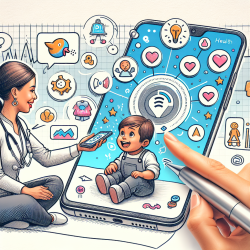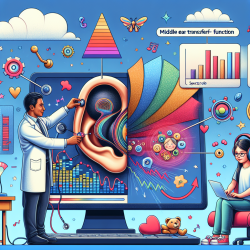Introduction
The healthcare landscape is continually evolving, and with it, the systems designed to ensure patient safety and optimal outcomes. One such system is the Rapid Response System (RRS), which is crucial in managing in-hospital emergencies like cardiac arrests. A recent study titled "Improvement of the Rapid Response System at an Acute Rehabilitation Hospital in New Mexico" sheds light on effective strategies to enhance RRS in rehabilitation settings. This blog explores the study's findings and discusses how practitioners can leverage these insights to improve their skills and outcomes.
Study Overview
The study conducted at Lovelace UNM Rehabilitation Hospital in Albuquerque, New Mexico, aimed to improve the RRS through quality improvement interventions. The focus was on enhancing rapid response announcements, standardizing crash cart stocks, and clarifying role assignments during emergencies. Pre- and post-intervention questionnaires were used to assess the effectiveness of these interventions, with a 100% response rate from clinical staff.
Key Findings
- Improved Communication: Post-intervention results showed significant improvement in the audibility of rapid response announcements. This was achieved by installing new speakers and distributing pagers to clinical staff.
- Role Clarity: Training and drills helped clarify role assignments, reducing confusion during rapid responses. Post-intervention, all staff reported knowing their roles, and there was a marked decrease in the perception of having too many duties.
- Crash Cart Standardization: Although confidence in crash cart stocking decreased post-intervention, this may reflect increased awareness and scrutiny of the system.
Implications for Practice
The study highlights the importance of continuous quality improvement (QI) in enhancing RRS effectiveness. Practitioners can adopt several strategies based on these findings:
- Regular Training: Conduct frequent training sessions and drills to ensure all staff are familiar with their roles and responsibilities during emergencies.
- Effective Communication: Invest in communication tools that ensure rapid response announcements are heard clearly throughout the facility.
- Standardization: Regularly audit and standardize crash cart contents to ensure readiness during emergencies.
Conclusion
Continuous QI is essential for improving RRS in rehabilitation hospitals. By implementing targeted interventions and fostering a culture of continuous learning, healthcare practitioners can enhance patient safety and outcomes. Future research should focus on larger sample sizes and long-term follow-up to validate these findings further.
To read the original research paper, please follow this link: Improvement of the rapid response system at an acute rehabilitation hospital in New Mexico.










